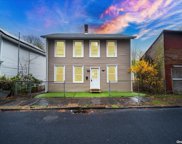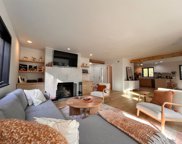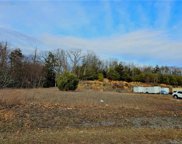
Kingston (county seat), New York
Rare opportunity! Own this fully renovated home in this high desirable neighborhood. Step inside a stunning 5 bedroom, 2 bathroom house. Brand new bathrooms and kitchen...

- 5 Beds
- 2 Baths
- 3545562 MLS

Stunning Furnished Woodstock Home with Heated Pool. *Furnishings include all furniture, electronics, decor and kitchenware. Welcome to 9 Munchkin Lane, a stunning newly r...

- 4 Beds
- 4 Baths
- 3542219 MLS

This property is a prime lot on Route 28 with a high traffic count. There are approximately 23,000+ average daily traffic counts. It offers an idyllic blend of natural be...

- H6290970 MLS

Information Copyright 2024, OneKey® MLS. All Rights Reserved. The source of the displayed data is either the property owner or public record provided by non-governmental third parties. It is believed to be reliable but not guaranteed. This information is provided exclusively for consumers’ personal, non-commercial use. The data relating to real estate for sale on this website comes in part from the IDX Program of OneKey® MLS.
Address Search
Land area: 7.3 sq. mi.
Water area: 1.3 sq.mi.
Founded: 1614
Population in 2014: 23,557 (100% urban, 0% rural)
Population density: 3,203 people per square mile.
County seat: Ulster County
Colleges and Universities: Bard College, Ulster County Community College, Culinary Institute of America, State University of New York at New Paltz, Marist College, Dutchess Community College, Vassar College
Description:
Kingston is a city in and the county seat of Ulster County, New York, United States. It is 91 miles (146 km) north of New York City and 59 miles (95 km) south of Albany. It became New York's first capital in 1777, and was burned by the British on October 13, 1777, after the Battles of Saratoga. In the 19th century, the city became an important transport hub after the discovery of natural cement in the region, and had both railroad and canal connections. Passenger rail service has since ceased, and many of the older buildings are part of three historic districts, such as the Stockade District uptown, the Midtown Neighborhood Broadway Corridor, and the Rondout-West Strand Historic District downtown.As early as 1614 the Dutch had set up a factorij (trading post) at Ponckhockie, at the junction of the Rondout Creek and the Hudson River. The first recorded permanent settler in what would become the city of Kingston, was Thomas Chambers, who came from the area of Rensselaerswyck in 1653. The place was called Esopus after the local Esopus tribe. As more settlers arrived, tensions developed between the Esopua and the Dutch, in part due to the Dutch selling alcohol to the young Esopus men.
In the spring of 1658 Peter Stuyvesant, Director-General of New Amsterdam, arrived and advised the residents that if they wished to remain they must re-locate to high ground and build a stockade. Tensions continued between the Esopus and the settlers, eventually leading to the Esopus Wars. In 1661 the settlement was granted a charter as a separate municipality; Stuyvesant named it Wiltwijck (Wiltwyck).[1] It was not until 1663 that the Dutch ended the four-year conflict with the Esopus through a coalition of Dutch settlers, Wappinger and Mohawk. Wiltwyck was one of three large Hudson River settlements in New Netherland, the other two being Beverwyck, now Albany, and New Amsterdam, now New York City. With the English seizure of New Netherland in 1664, relations between the Dutch settlers and the English soldiers garrisoned there were often strained. In 1669 Wiltwyck was renamed Kingston, in honor of the family seat of Governor Lovelace's mother.
Transportation:
There are n/a airports and n/a Amtrak train stations within 30 miles of the Kingston city center.
The average travel time to work in Kingston is 8% lower than the national average.
The number of people who take public transportation in Kingston is 41% lower than the national average.
The number of people who carpool to work in Kingston is 7% higher than the national average.
The number of people who work from home in Kingston is 11% higher than the national average.
Races:
73.2% White
14.6% Black or African American
0.50% Native American
1.80% Asian
1.90% from other races
5.00% from two or more races
Hispanic or Latino of any race were 13.4% of the population.
Age:
Median resident age: 40.6 years
New York median age: 38.2 years
Average household size:
Kingston: 2.3 people
New York: 2.6 people
Estimated median household income in 2013:
Kingston: $43,560 (it was $31,594 in 2000)
New York: $57,369
Estimated median house or condo value in 2013:
Kingston: $170,738 (it was $86,500 in 2000)
New York: $277,600
Median gross rent in 2013: $967.
Air pollution:
Air Quality Index (AQI) level in 2013 was 56.3. This is better than average.
Sulfur Dioxide (SO2) [ppb] level in 2013 was 2.42. This is worse than average. Closest monitor was 0.6 miles away from the city center.
Ozone [ppb] level in 2013 was 28.3. This is about average. Closest monitor was 0.6 miles away from the city center.
Particulate Matter (PM2.5) [µg/m3] level in 2002 was 11.1. This is about average. Closest monitor was 16.8 miles away from the city center.
Unemployment in September 2015:
Here: 4.8%
New York: 4.8%
Crime:
The overall crime rate in Kingston is 5% higher than the national average.
For every 100,000 people, there are 8.54 daily crimes that occur in Kingston.
Kingston is safer than 33% of the cities in the United States.
In Kingston you have a 1 in 33 chance of becoming a victim of any crime.
The number of total year over year crimes in Kingston has decreased by 3%.


